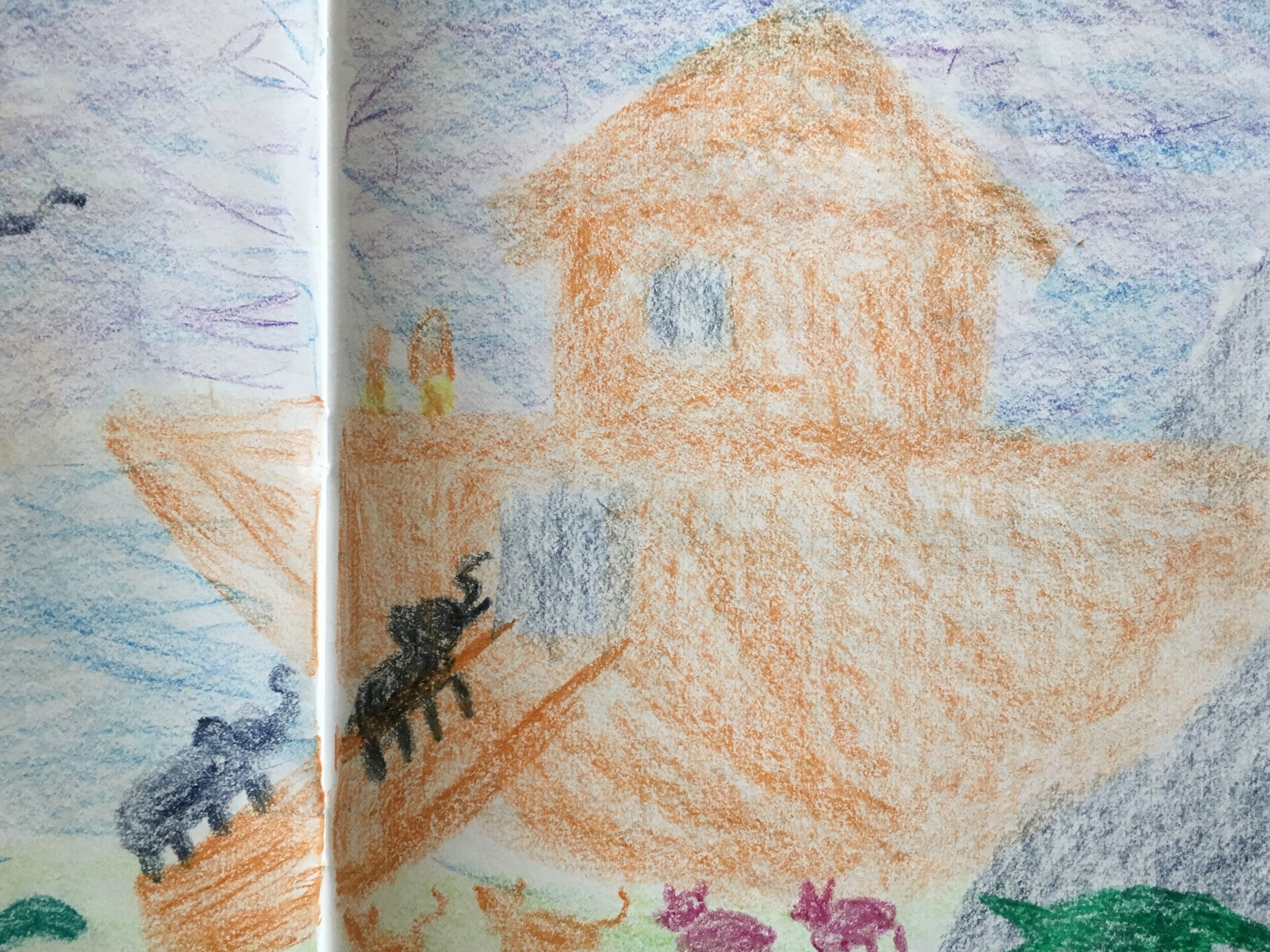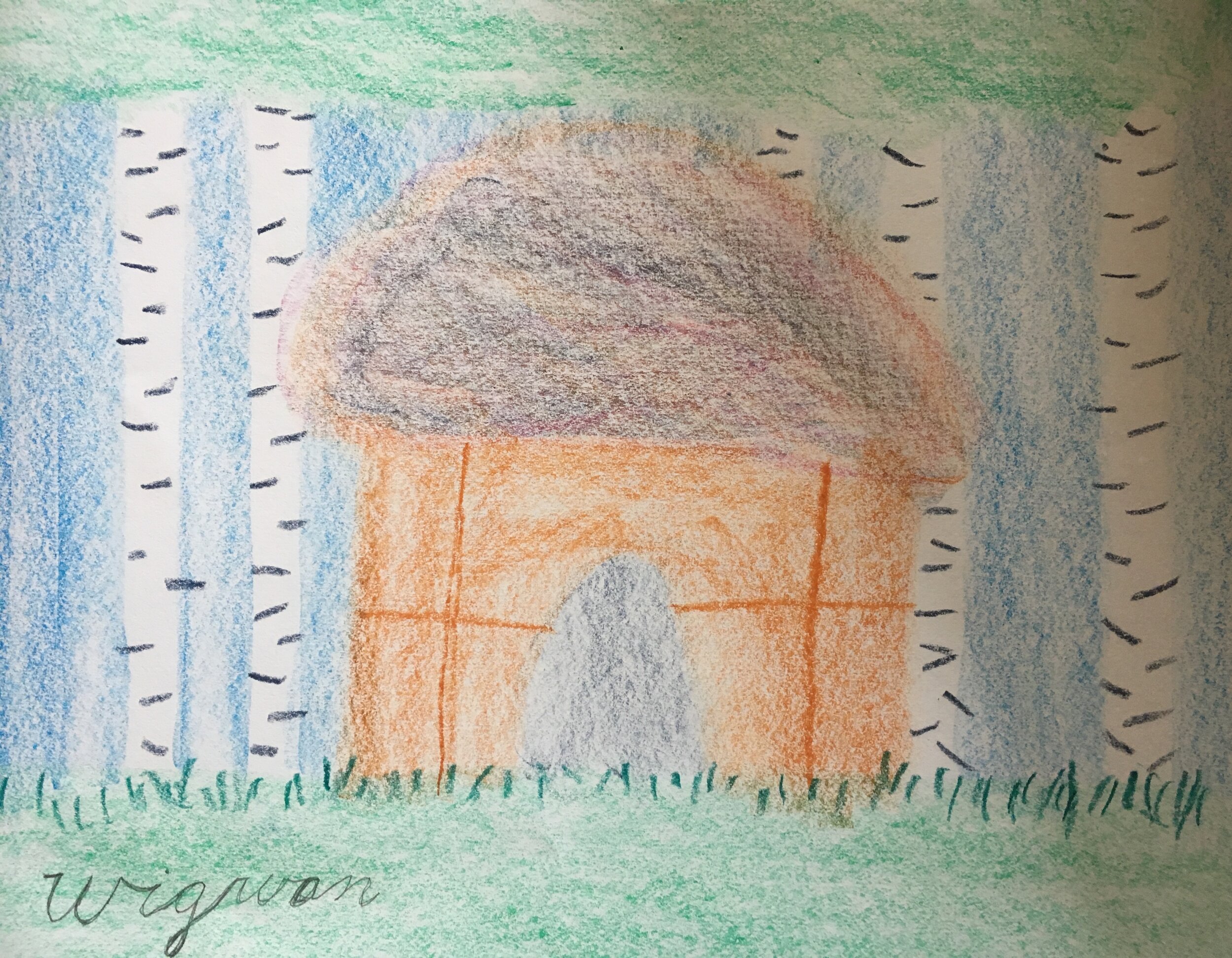Grade 3
GRADE THREE CURRICULUM OVERVIEW
This overview is from the 2020-2021 school year.
“The change in the children’s self-awareness grows stronger at the age of nine, and you find that they understand much better what you say about the difference between the human being and the world. Before they reach the age of nine, children merge far more thoroughly with the environment than is the case later, when they begin to distinguish themselves from their surroundings. Then you will find that you can begin to talk a little about matters of the soul and that they will not listen with such a lack of understanding as they would have listened earlier. In short, the children’s self-awareness grows deeper and stronger when they reach this age.”
-Rudolf Steiner
The third grade child has entered, or is about to enter their ninth year of life. This is a time of great transition, which in Waldorf Education, we often refer to as “The Nine Year Change”. During this transition the child leaves the airy “fairy tale consciousness” of early childhood behind and becomes more aware that they are a separate individual from others. “The world is out there and ‘I’ am no longer ‘one’ with it.” But they firmly stand upon it now! With this separation comes a sense of loss and longing, which may manifest in new behaviors, sadness and grief, moodiness, worry, questioning of authority, nightmares, change in eating habits, and even fear of death.
The Waldorf third grade curriculum marks the change to a more individualized presence in the children, as well as a new readiness for academics and a corresponding need to experience the work of the real world in a practical and meaningful way.
Third graders are ripe for practical experience. This need is met in the curriculum through the study of farming, gardening, food preparation, house building, and clothing. The children will study how early builders used their own bodies, initially, to develop the art of measurement and how they considered the effects of climate and geography (as did the farmers) to determine what their dwellings would look like.
The primary Language Arts lesson material features stories of people overcoming challenges and starting life anew. Featuring selected stories from the Torah, we examine relevant narratives from the history of the Hebrew people which serve as appropriate metaphors for the child’s inner experience. The child understands on some level what it is to leave paradise, step into the real world, and begin to stand on their own.
Throughout the curriculum, the third grader is provided with strong role models who show courage and determination. Often third grade classes celebrate the Hebrew Holy day of Shabbat or “Sabbath”, by sharing a Jewish egg bread called challah, and many traditional Jewish holidays are observed as well. Hebrew stories, folk dances, and songs are woven into the curriculum, which may also include activities such as cooking, baking, and churning butter.
Indeed, the third grade year is a fruitful year for the child, filled with satisfying work and play, as well as challenges and opportunities for growth in a multitude of ways.
Language Arts: Creation Stories and Fall From Paradise
This first block will integrate much artistic work to help ease the transition back into school. The creation of the world and of the human being are the painting subjects for the first weeks of school with accompanying written sentences. Cursive writing will be practiced and increasingly integrated into written work. Parts of speech are introduced, beginning with nouns, verbs, and adjectives. Baseline assessment in reading, spelling, and math will help to gather a sense of where students are beginning the school year, to guide literacy and math instruction.
Mathematics: Time and Measurement
In this block, we explore concepts of time and linear measurement, woven into narrative farming stories related to the harvest season. We review place value and introduce vertically oriented addition and subtraction. Daily math review includes review of place value, mental math, story problems, and times table practice. Practical work is integrated with measurement concepts. Asynchronous Language Arts skill practice work is offered in lieu of afternoon skills class.
Language Arts: Conflict and Consequence
Our second Language Arts block brings continued work with the parts of speech and introduces basic paragraph writing. Work is continued with phonics rules, spelling, and reading fluency. Stories reflect people encountering conflict and making choices resulting in consequences, both positive and negative. Deluge legends such as “Noah and the Great Flood” are explored, as well as stories describing the origin of the confusion of languages. We conclude the block with stories of conflict pushing courageous people towards progress and innovation and introduce the four kinds of sentences (commands, questions, exclamations, or statements) through discussion of successful conflict resolution.
Mathematics: Measurement and Money
Moving forward with measurement leads us to explore volume, and money. We begin to work with the concepts of estimation and rounding. As we enter the holiday season, we experience these concepts through cooking and baking, and examine seasonal work to be done to prepare for the winter months. Asynchronous Language Arts skill practice work is offered in lieu of afternoon skills class.
Class Play Block
Socially distanced play production will prove to be a difficult task, but remains an important component of Waldorf education. Whether in-person or distanced, we will work with speech, memory, and artistic work to create a collaborative storytelling experience to share with others.
Language Arts: Language Arts: Dreamers, Prophecies, and Powerful Voices
In this block, we hear stories of a variety of visionaries, through whom we are introduced to verb tenses and possessive nouns and apostrophes. We emphasize paragraph structure and writing strong summaries as student lesson book entries become more independent. “The guardians”, which include double letters, -tch, -ck, and -dge are the focus of phonics work, and we continue to reinforce previously introduced concepts through daily warm-ups and review.
Mathematics: Vertical Multiplication
Having gained practice in vertically oriented addition and subtraction, with and without regrouping, we introduce vertically oriented multiplication, which looks a bit different. Having many multiplication facts memorized at this point will be very helpful in catching onto this more advanced multiplication skill. We explore measurement of weight and incorporate measurement review with integrated projects, including the baking of hamantaschen for Purim. Farming stories tie together these math concepts into a cohesive narrative.
Language Arts: Exodus and Journeys to Freedom
Leading up to Passover, we hear stories of the Israelites’ Exodus from Egypt, which this Jewish holiday commemorates. “Helping verbs” and “being verbs” are the focus of grammar work and phonics work emphasizes syllable units, encoding and decoding words by syllable rather than by individual units of sound. Stories of courageous journeys to freedom are paralleled by greater freedom in independent reading that students are now experiencing. We work towards a transition from reading groups to book clubs.
Mathematics: Division
Our last math block of the year emphasizes division in preparation for long division and fractions in Grade 4. We introduce the concept of remainders and integrate stories involving different grains of the world. We work with fact fluency and division practice throughout the year, though this block brings this mathematical operation, often the trickiest, to the fore.
Living on the Earth: Bringing it All Together
Throughout the year, we integrate portions of the “Living on the Earth” curriculum with other blocks to satisfy the child’s need for practical work during this period of development. In this last period of the school year, we have reached the time of year when the weather warms up, gardening and other seasonal outdoor tasks begin to pick-up, and the weather is great for outdoor learning. Hopefully at this point in the year, we will be able to be together to some capacity, working outdoors on building and gardening projects, putting our measurement curriculum to good use. We weave in review of Mathematics and Language Arts as we engage in a project-based learning unit in which we envision and create a class farmers market.
THE ARTS:
Form Drawing We begin the year revisiting form concepts brought in grade 2, which we did not do at the end of the year. These include forms that are mirroring across axes. We then work into Grade Three form drawing content, which includes creating forms across a curved axis, as well as exploring the relationship between inner and outer forms, reflecting the growing complexity in the nine-year-old’s relationship with the outer world. Learn more about form drawing and work through sample lessons here.
Watercolor Painting We begin the school year by accompanying creation stories with watercolor paintings. We continue this throughout the year with weekly watercolor sessions, still as experiences of color, while also bringing in greater form than in past years. During periods, these will be shared as a video to be done asynchronously, with painting kits sent home. Try a third grade virtual watercolor painting lesson here.
Drawing We continue to use beeswax crayons, in block and stick form, to create pictures in our lesson books to accompany stories and curricular content.
Modeling Weekly beeswax modelling will accompany nature stories, poems, and songs. During periods, these will be shared as a video to be done asynchronously. Music In third grade, we will continue to work with seasonal songs and will also introduce songs from Hebrew cultural tradition.
Pentatonic flute work will be offered during periods of distance learning. When we are able to reconvene in person, based on progress with the pentatonic flute, recorders will be introduced. Third grade typically brings the introduction of rounds in singing. We will introduce some songs to practice individually during distance learning that may be sung as a round when we are able to once again sing together.
Winter Assembly:
The Winter Assembly for 2021 was a virtual experience. Each class provided songs and poems as well as images of work that they have been working on thus far this year. Here is what Grade Three shared.








